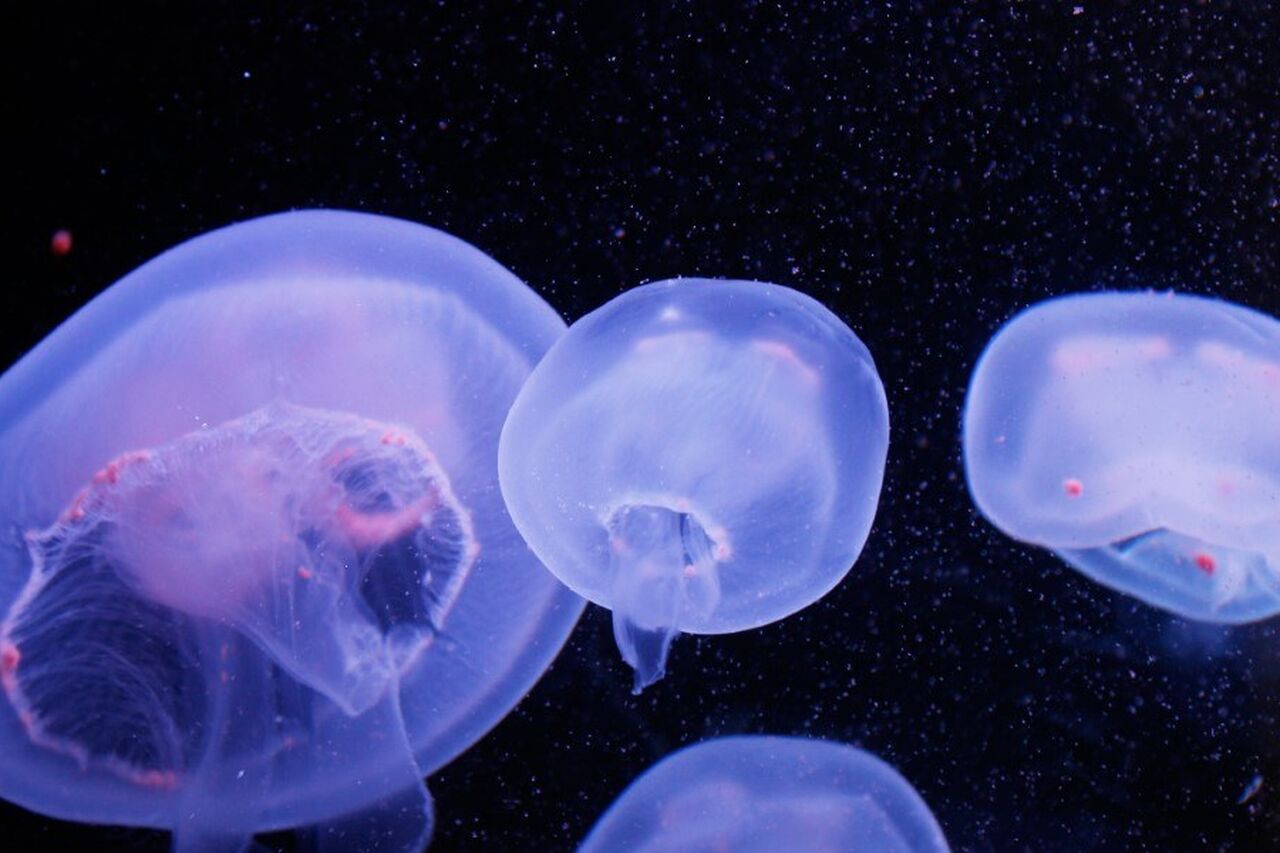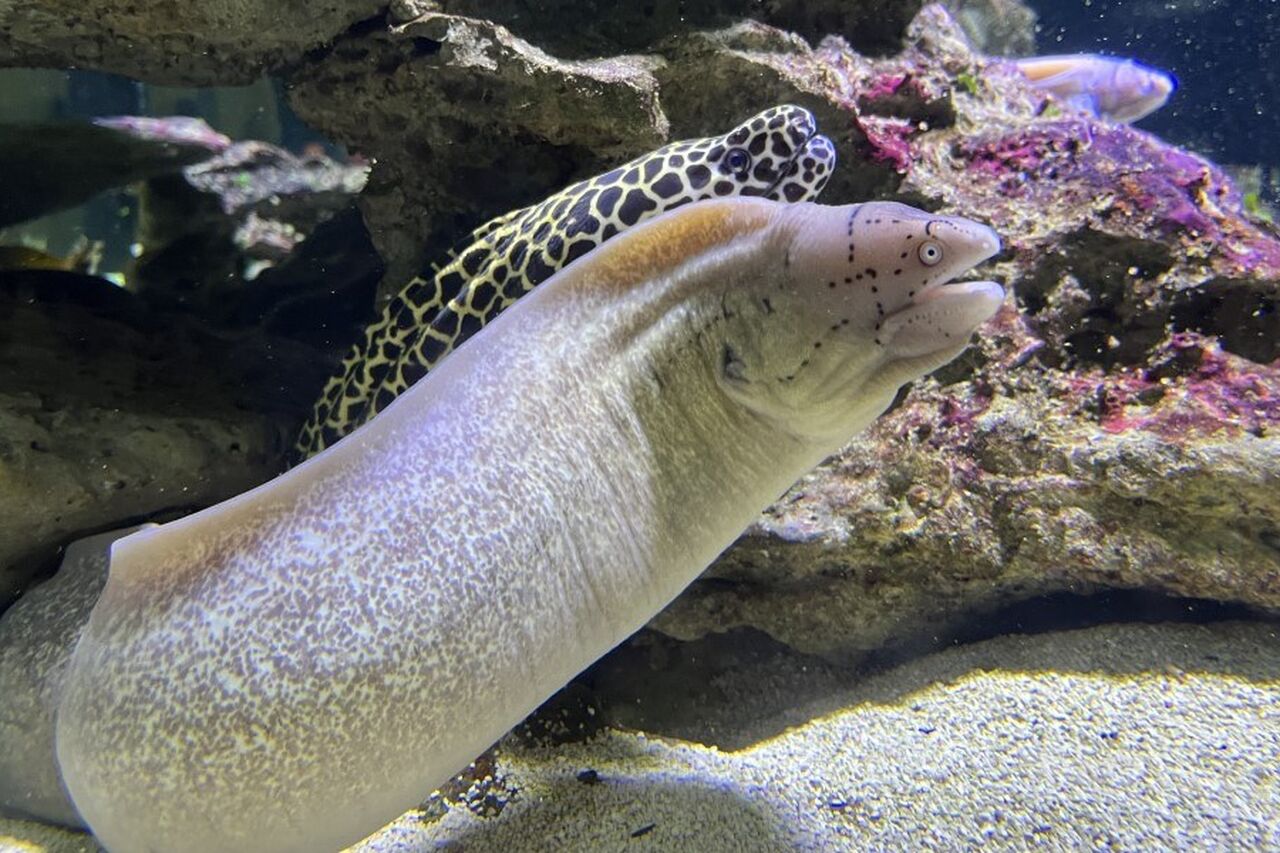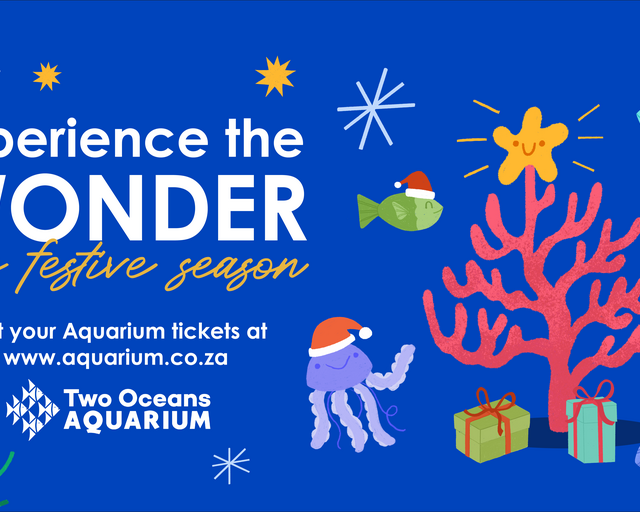The ocean is a marvellous place filled with a vast array of beautiful species. Each of the marine species that make up the diverse ocean ecosystem possesses unique traits. This includes the most interesting defence mechanisms adapted to avoid potential threats to survival. Let’s take a look at some Aquarium animals and their defence mechanisms.
Dwarf pufferfish
Despite its small size, the dwarf pufferfish packs a punch with many interesting defensive adaptations.
The dwarf pufferfish has a symbiotic relationship with a special bacterium that produces tetrodotoxin, a powerful neurotoxin, within its skin and internal organs. The tetrodotoxin makes the pufferfish poisonous to humans, dogs, cats, and other mammals but not to the species of predatory fish that prey on puffers.
You can guess another of the pufferfish’s defence mechanisms from its name! Pufferfish, known locally as blaasop, are named for their ability to puff up by sucking water or air into a sac connected to the stomach. When threatened, its body blows up into a spherical shape as a defence mechanism. As well as catching potential predators off guard by appearing larger, this mechanism prevents many predators from fitting the pufferfish in their mouths!
Octopus
The octopus is a master of camouflage and is renowned for its rapid colour changes. It can adapt its body colour to match the surrounding environment within seconds. As you can imagine, this is a nightmare for potential predators as these animals become almost impossible to spot.
In addition to its fascinating colour-changing ability, octopuses also eject ink to startle or confuse potential predators. They also propel through water at quick speeds and squeeze through tiny crevices to avoid and escape threats.
Can you spot the occy down below?
Jellyfish
Jellyfish possess stinging cells known as nematocysts that fire small venom-filled barbs called cnidae. This is used to protect them against potential threats. Jellyfish are so fragile that they need to kill or paralyse their prey and predators very quickly to avoid having their tentacles ripped off and their bodies torn apart.
FUN FACT: The above-mentioned process where jellies fire cells is also the quickest biological event in nature. So, for anyone who thinks these animals do everything at a slow pace, this is not the case.

Sea anemones
Anemones inject poison into their prey through barbs located in their tentacles, which fire on contact (but don't worry, human skin is too thick for most anemones to harm). These poisonous barbs also act as a form of protection from potential predators.
Anemones also secrete a special slime to protect themselves. This slime prevents the stinging cells on one tentacle from firing when they come into contact with another tentacle or with the anemone's body.
Did you know: While most sea creatures avoid anemones because of the stinging cells in their tentacles, clownfish pairs live closely with anemones in a mutually beneficial partnership which can last a lifetime! Clownfish protect themselves by occupying the space inside the anemone, which is inaccessible to clownfish predators, and at the same time, they aggressively fend off potential anemone predators.
Moray eels
Moray eels are apex predators and therefore do not experience many threats from predators. They typically help to keep prey species populations under control.
However, moray eels secrete mucus over their skin to protect against predators. In some species of moray eel, this mucus contains a toxin. Their thick skin and high densities of goblet cells in the epidermis mean mucus is produced faster than in other eel species.

We know what you're thinking, and yes, these animals are awesome! These amazing defences help ocean animals survive and continue growing their populations. They are not only cool traits but also vital.
Remember, you can see them all up close on your next visit to the Two Oceans Aquarium.
Related News
Sign up to our Newsletter
Receive monthly news, online courses and conservation programmes.




